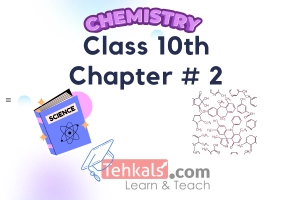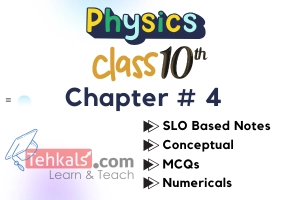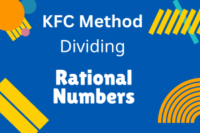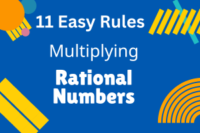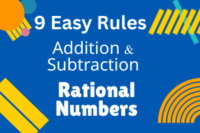Chemistry Class 10 Chapter 3
Published: 13 Dec 2023
Chemistry Class 10 Chapter 3 introduces the concept of “Organic Chemistry”. This is mainly chapter No. 11, “Organic Chemistry”, of the book of Class 10.
This article consists of Notes, SLO Based Notes and MCQs of chemistry, which cover your course, board papers and clear your chemistry concept for different types of tests.
Chemistry Class 10 Chapter 3 Notes
Organic Chemistry
SLO Based Questions
Chemistry Class 10 Chapter 3 MCQs
1. Organic compounds were defined earlier as “compounds that are derived from _________(a) Living things
(b) Non-living things
(c) Microorganism
(d) None of these
Show Answer
Living things
2. Vital force theory was presented by :
(a) Nicols
(b) Thornton
(c) Berzellius
(d) None of these
Show Answer
Berzellius
3. Berzellius presented vital force theory in :
(a) 1915
(b) 1815
(c) 1916
(d) 1816
Show Answer
1815
4. According to this theory, vital forces are necessary for the synthesis of ______ compounds.
(a) Organic
(b) Inorganic
(c) Biochemical
(d) None of these
Show Answer
Organic
5. The use of organic compound in daily life is :
(a) No use
(b) Minimal
(c) Maximum
(d) None of these
Show Answer
Maximum
To Download Complete Notes of Chemistry Notes 10 Class, Click on the given link.
6. Organic compound are used in :(a) Food
(b) Clothes
(c) Gas
(d) All of them
Show Answer
All of them
7. Organic chemistry is the study of _________
(a) Carbon
(b) Hydrogen
(c) None
(d) None of these
Show Answer
Carbon
8. Oxides of carbon, carbonates, bicarbonate and carbides are _________ in organic chemistry.
(a) Included .
(b) Not included
(c) May be
(d) None of these
Show Answer
Not included
9. The study of ________ and their derivatives is called organic chemistry
(a) Hydrocarbons
(b) Lanthanides
(c) Alkali metal
(d) None of these
Show Answer
Hydrocarbons
10. The first organic compound prepared in laboratory is ________
(a) Ammonia
(b) Acetic acid
(c) Urea
(d) None of these
Show Answer
Urea
11. There are ______ of organic compounds present today.
(a) Thousands
(b) Millions
(c) Billions
(d) None of these
Show Answer
Millions
12. Organic compounds that contain _______ only are called hydrocarbon.
(a) C and H
(b) C , H and N
(c) Carbon only
(d) None of these
Show Answer
C and H
13. Organic compound are of _____ types depending upon their origion.
(a) 5
(b) 3
(c) 2
(d) 10
Show Answer
2
14. All are the synthetic organic compounds EXCEPT :
(a) Plastic
(b) Coal
(c) Detergents
(d) Medicines
Show Answer
Coal
15. Coal and food we eat are the _______ compounds.
(a) Naturally occurring
(b) synthetic
(c) Semi synthetic
(d) None of these
Show Answer
Naturally occurring
16. Organic compounds can be represented by ________ different formulas.
(a) 02
(b) 03
(c) 04
(d) 05
Show Answer
04
17. Carbon atom has a valance of four and it forms four ______ bonds.
(a) Covalent
(b) Metallic
(c) Coordinate covalent
(d) None of these
Show Answer
Covalent
18. The formula which represents ____ of atoms in one molecule of organic compound is called molecular formula
(a) Actual ratio
(b) Actual number
(c) Empirical number
(d) None of these
Show Answer
Actual number
19. The molecular formula of propane is :
(a) $ C_3 H_6 $
(b) $ C_6 H_3 $
(c) $ C_3 H_8 $
(d) $ C_4 H_{10} $
Show Answer
$ C_3 H_8 $
20. The _____ of different atoms of various elements around the carbon atoms present in a molecule of a compound is called structural formula.
(a) arrangement
(b) Distribution
(c) Verification
(d) None of these
Show Answer
arrangement
21. ______ are represented by a single line $ (-) $
(a) Triple
(b) Double
(c) Single
(d) None of these
Show Answer
Single
22. Double bonds are represented by _______
(a) $ – $
(b) $ = $
(c) $ \equiv $
(d) None of these
Show Answer
$ = $
23. The formula where the groups of atoms are shown in order with no bonds is called ______ formula.
(a) Condensed
(b) structural
(c) Molecular
(d) None of these
Show Answer
Condensed
24. The condensed formula of pentane is :
(a) $ C_5H_{12} $
(b) $ CH_3(CH_2)_3CH_3 $
(c) $ CH_3 (CH_2)_2 CH_3 $
(d) None of these
Show Answer
$ CH_3(CH_2)_3CH_3 $
25. A formula in which electrons are shown as dots and cross between various atoms in one molecule of a compound is called _________ formula.
(a) Condensed
(b) Structural
(c) Dot and Cross
(d) None of these
Show Answer
Dot and Cross
26. The general formula for alkanes is :
(a) $ C_n H_{2n+2} $
(b) $ C_n H_{2n} $
(c) $ C_n H_{2n-2} $
(d) None of these
Show Answer
$ C_n H_{2n+2} $
27. The organic compound in which carbon atoms are in________ skeleton is called open chain organic compound
(a) Cyclic chain
(b) Aromatic
(c) Open chain
(d) None of these
Show Answer
Open chain
28. Open chain organic compounds are also called :
(a) Alicyclic
(b) Acyclic
(c) Cyclic
(d) None of these
Show Answer
Acyclic
29. The organic compounds in which carbon atom link with each other to form straight chains are called ______ organic compounds.
(a) Straight chain
(b) Branched chain
(c) Aromatics
(d) None of these
Show Answer
Straight chain
30. For branched chain organic compounds, we use __________ as a prefix.
(a) Meta-
(b) Sento-
(c) Pico-
(d) Iso-
Show Answer
Iso-
31. _______ is the example of branched chain organic comps
(a) n-butane
(b) Iso-butane
(c) Cyclo-butane
(d) None of these
Show Answer
Iso-butane
32. Organic compounds in which each carbon atom in a molecule forms four_____ covalent bonds with other atom are called saturated organic compounds.
(a) Single
(b) Double
(c) Triple
(d) None of these
Show Answer
Single
33. Saturated organic compounds are ________
(a) Alkynes
(b) Alkenes
(c) Alkanes
(d) None of these
Show Answer
Alkenes
34. Following are the examples of alkanes EXCEPT :
(a) Methane
(b) Ethane
(c) Propane
(d) Butane
Show Answer
Butane
35. Organic compounds in which at least ______ covalent bond is present between carbon-carbon are called unsaturated organic compounds.
(a) Double
(b) Triple
(c) Single
(d) Both a and b
Show Answer
Both a and b
36. Those organic compounds in which carbon atoms are linked together to form a close chain structure is called _______ organic compounds.
(a) Close chain
(b) Open chain
(c) Branched chain
(d) None of these
Show Answer
Close chain
37. _______ organic compounds are those organic compounds in which the ring is composed of only carbon atoms
(a) Homocyclic
(b) carbocyclic
(c) Both a and b
(d)
Show Answer
Both a and b
38. The cyclic organic compounds having alternate single or double bonds in its structural carbon ring is called _______ organic compounds.
(a) Hetrocyclic
(b) Aromatic
(c) Alicyclic
(d) None of these
Show Answer
Aromatic
39. ________ is the example of aromatic organic compounds.
(a) Benzene
(b) Furane
(c) Cyclopropane
(d) None of these
Show Answer
Benzene
40 The organic compounds which contain hetro atoms other than carbon in its ring is called ________ organic compounds
(a) Homocylic
(b) Carbocyclic
(c) Herocyclic
(d) None of these
Show Answer
Homocylic
41. Following are the examples of hetrocyclic organic compounds EXCEPT :
(a) Furane
(b) Anthracene
(c) Thiophene
(d) Pyridine
Show Answer
Anthracene
42. Carbon can make a bonds with many other atoms :
(a) Hydrogen
(b) Oxygen
(c) Nitrogen
(d) All of them
Show Answer
All of them
43. Carbon is a ________ atom.
(a) Monovalent
(b) Tetravalent
(c) Pentavalent
(d) None of these
Show Answer
Tetravalent
44. ________ atom can form four covalent bonds.
(a) Carbon
(b) Hydrogen
(c) Sodium
(d) None of these
Show Answer
Carbon
45. Carbon atom can form ________ bond in their compounds.
(a) Single
(b) Double
(c) Triple
(d) All of them
Show Answer
All of them
46. The self-linking ability of carbon is called _________
(a) Alkylation
(b) Catenation
(c) Magnitude
(d) None of these
Show Answer
Catenation
47. _______ are the compounds that have same molecular formula but different structural formula.
(a) Isomers
(b) Halogens
(c) CFCs
(d) None of these
Show Answer
Isomers
48. The size of carbon atom is very _________ due to carbon –carbon strong covalent bonds.
(a) Large
(b) Intermediate
(c) Small
(d) None of these
Show Answer
Small
49. Organic compounds are mainly composed of _______ atoms.
(a) C only
(b) C and H
(c) Hydrogen only
(d) None of these
Show Answer
C and H
50. Organic compounds may include :
(a) Oxygen , Sulphur
(b) Nitrogen , phosphorus
(c) Halogens
(d) All of them
Show Answer
All of them
51. Organic compounds are _________ bonded compounds.
(a) Covalently
(b) Ionic
(c) Metallic
(d) None of these
Show Answer
Covalently
52. Organic compounds are mainly ________ in nature.
(a) Polar
(b) Non-polar
(c) Semi-polar
(d) None of these
Show Answer
Non-polar
53. The organic compounds do not ionize in ______ solution.
(a) Aqueous
(b) Molten
(c) Colloids
(d) None of these
Show Answer
Aqueous
54. Organic compounds are soluble in _________ solvents.
(a) Polar
(b) Non-polar
(c) Both a & b
(d) None of these
Show Answer
Non-polar
55. The examples of non-polar solvents are :
(a) Ether
(b) Benzene
(c) Carbon tetrachloride
(d) All of them
Show Answer
All of them
56. Organic compounds have generally _________ melting and boiling points.
(a) low
(b) High
(c) Constant
(d) None of these
Show Answer
low
57. Organic compounds are _______ in nature.
(a) Alkaline
(b) Volatile
(c) Isomeric
(d) None of these
Show Answer
Volatile
58. Organic compounds are thermally ________ and inflammable
(a) Unstable
(b) Stable
(c) Insulator
(d) None of these
Show Answer
Unstable
59. Reaction that involve organic compounds are much _______ as compared to other reactions.
(a) Faster
(b) Slower
(c) Intermediate
(d) None of these
Show Answer
Slower
60 Organic compounds reaction need heat and ______ to speed up the reaction.
(a) Salt
(b) Acid
(c) Indicator
(d) Catalyst
Show Answer
Catalyst
61 On burning , the organic compounds produce _______ flame due to incomplete combustion .
(a) Smoky
(b) Foggy
(c) Soapy
(d) None
Show Answer
Smoky
62. _____ is the phenomenon in which two or more compounds having same molecular formula but different structural formula.
(a) Flammability
(b) Covalent nature
(c) Isomerism
(d) None of these
Show Answer
Isomerism
63. Different organic compounds show similarities with each other due to same ________
(a) Composition
(b) Functional group
(c) Reactivity
(d) None of these
Show Answer
Functional group
64. Organic compounds are _______ conductor of electricity both in fused and in solution.
(a) Poor conductor
(b) Good conductor
(c) Insulator
(d) None of these
Show Answer
Poor conductor
65. Some organic compounds such as _______ are obtained from animals in the form meat , mutton , chicken etc.
(a) Carbohydrate
(b) Lipids
(c) Proteins
(d) None of these
Show Answer
Proteins
66. _______ are obtained in the form of animal fat , milk etc.
(a) Lipids
(b) Fats
(c) Proteins
(d) None of these
Show Answer
Fats
67. Plants prepare a ________ number of organic compounds.
(a) Large
(b) Small
(c) Half
(d) None of these
Show Answer
Large
68. When plants and animals are dead, they are buried under high temperature and pressure to convert it into ___
(a) Fossil fuels
(b) Hydrocarbon
(c) Asphalt
(d) None of these
Show Answer
Fossil fuels
69. Coal is blackish brown ____ and a major source of organic compounds.
(a) Gaseous
(b) Liquid mass
(c) Solid mass
(d) None of these
Show Answer
Solid mass
70. It is believed that coal is formed from the remains of _______
(a) Animals
(b) Plants
(c) Microorganisms.
(d) None of these
Show Answer
Plants
71. In millions of years , coal is formed under _____ action.
(a) Bacterial
(b) Chemical
(c) Both a and b
(d) None of these
Show Answer
Both a and b
72. The plants under those circumstances firstly converted into :
(a) Peat
(b) Lignite
(c) Bituminous
(d) Anthracite
Show Answer
Peat
73. When coal is strongly heated in absence of air , this process is called _________
(a) Coalification
(b) Carbonization
(c) Aeration
(d) None of these
Show Answer
Carbonization
74. During carbonization , coal is converted into :
(a) Coke , coal gas
(b) Coal tar
(c) Ammonical liquor
(d) All of them
Show Answer
All of them
75. The word petroleum is derived from two ______ words.
(a) Latin
(b) Greek
(c) Person
(d) None of these
Show Answer
Latin
76. In petroleum , the word “petra” means _____
(a) Oil
(b) Rock
(c) Sand
(d) None of these
Show Answer
Rock
77. In petroleum , the word “ oleum” means ______
(a) Rock
(b) Sand
(c) Oil
(d) None of these
Show Answer
Oil
78. Mineral oil , crude oil , liquid gold are other names of _______
(a) Petroleum
(b) Coal
(c) Natural gas
(d) None of these
Show Answer
Petroleum
79. Petroleum is a complex ______ of solids , liquid and gaseous hydrocarbons, water, salts and earth particles.
(a) Mixture
(b) Compounds
(c) Isotopes
(d) None of these
Show Answer
Mixture
80. Petroleum is _____ coloured having unpleasant smell.
(a) Gold
(b) Redolish
(c) Dark Brown
(d) None of these
Show Answer
Dark Brown
81. The _____ is a mixture of low molecular mass gaseous hydrocarbon.
(a) Petroleum
(b) Natural gas
(c) Coal
(d) None of these
Show Answer
Natural gas
82. It is mainly composed of low _______ hydrocarbons.
(a) Boiling point
(b) High boiling point
(c) Freezing point
(d) None of these
Show Answer
Boiling point
83. _______ is the main component of natural gas.
(a) Propane
(b) Ethane
(c) Methane
(d) None of these
Show Answer
Methane
84. Natural gas is composed _______ of methane .
(a) 50 to 80 %
(b) 85 to 95 %
(c) 95 to 98 %
(d) None of these
Show Answer
85 to 95 %
85. In Pakistan , natural gas is known as __________
(a) Sui gas
(b) Marsh gas
(c) LPG
(d) None of these
Show Answer
Sui gas
86. Natural gas is used as a fuel in automobiles as ________
(a) Sui gas
(b) Liquid gold
(c) CNG
(d) None of these
Show Answer
CNG
87. Natural gas is used in the preparation of :
(a) Diamond
(b) Carbon black
(c) Soot
(d) None of these
Show Answer
Carbon black
88. The leaves, stems, fruits, flowers, seeds and roots of plants etc are called _______
(a) Natural products
(b) Basic products
(c) None
(d) None of these
Show Answer
Natural products
89. Most natural products are extracted from plants and are used as _______
(a) Fertilizer
(b) Medicines
(c) Cooling agent
(d) None of these
Show Answer
Medicines
90. Upto the ______ century, it was believed that living things can prepare organic compounds.
(a) $ 19^{th} $
(b) $ 20^{th} $
(c) $ 21^{st} $
(d) None of these
Show Answer
$ 19^{th} $
91. The vital force theory was proved wrong by the German chemist _____
(a) Friedrich wohler
(b) Dimitri Johnson
(c) Coady
(d) None of these
Show Answer
Friedrich wohler
92. Friedrich wohler prepared _______ form inorganic compounds on heating.
(a) Urea
(b) Alcohol
(c) Barley
(d) None of these
Show Answer
Urea
93. Hydrocarbons that contain only ______ covalent bonds between carbon atoms are called alkanes.
(a) Single
(b) Double
(c) Triple
(d) None of these
Show Answer
Single
94. Alkanes are ______ hydrocarbon
(a) Unsaturated
(b) Super- saturated
(c) Saturated
(d) None of these
Show Answer
Saturated
95. Alkanes are also called _______
(a) Olefins
(b) Paraffins
(c) Antigens
(d) None of these
Show Answer
Paraffins
96. Alkanes are _____ due to their saturated nature.
(a) More reactive
(b) Stable
(c) Less reactive
(d) None of these
Show Answer
Less reactive
97. Methane , ethane, propane etc are the examples of _____
(a) Alkanes
(b) Alkenes
(c) Alkynes
(d) None of these
Show Answer
Alkanes
98. A series of organic compounds that have similar structural features but differ from adjacent members by a _____ group is called homologs series .
(a) Methyl
(b) Methylene
(c) Methane
(d) None of these
Show Answer
Methylene
99. Each member of homologs series is called _______
(a) Homologue
(b) Radical
(c) Isomer
(d) None of these
Show Answer
Homologue
100. A homologue series have ______ general formula.
(a) Different
(b) Same
(c) Both a and b
(d) None of these
Show Answer
Same
101. Cycloalkanes are alkanes , in which carbon atoms are arranged in a ______ structure.
(a) Straight chain
(b) Branched chain
(c) Ring
(d) None of these
Show Answer
Ring
102. There are no _______ carbons in cycloalkane.
(a) Primary
(b) Secondary
(c) Tertiary
(d) None of these
Show Answer
Primary
103. Cycloalkanes has _____ hydrogen atoms than straight chain alkanes.
(a) Two more
(b) Two less
(c) Same
(d) None of these
Show Answer
Two less
104. The formula of cyclobutane is :
(a) $ C_4H_8 $
(b) $ C_4H_{10} $
(c) $ C_4H_9 $
(d) None of these
Show Answer
$ C_4H_8 $
105. Alkyl radicals are group of atoms formed when one hydrogen atom is _____ from alkane molecule.
(a) Added
(b) Removed
(c) Remains constant
(d) None of these
Show Answer
Removed
106. Alkyl radical is represented by a letter ______
(a) A
(b) r
(c) a
(d) R
Show Answer
R
107. The general formula for alkyl radical is :
(a) $ C_n H_{2n +1} $
(b) $ C_n H_{2n +2} $
(c) $ C_n H_{2n -2} $
(d) None of these
Show Answer
$ C_n H_{2n +1} $
108. When one hydrogen is removed from methane , it becomes :
(a) Pentyl
(b) Methyl
(c) Butyl
(d) None of these
Show Answer
Methyl
109. The molecular formula for methyl radical is :
(a) $ CH_4 $
(b) $ CH_2 $
(c) $ CH_3 $
(d) None of these
Show Answer
$ CH_3 $
110. Functional group of an atom or group of atom attached with R that is responsible for specific properties of ___ compounds
(a) Organic
(b) Inorganic
(c) Biochemical
(d) None of these
Show Answer
Organic
111. The reactive portion of molecule , containing _____ is called functional group.
(a) Only carbon
(b) Other elements
(c) Only hydrogen
(d) None of these
Show Answer
Other elements
112. All compounds that have same _______ have similar properties
(a) Functional group
(b) Alkyl radical
(c) No of carbons
(d) None of these
Show Answer
Functional group
113. The functional group of alcohol is _______
(a) $ -O- $
(b) $ -OH $
(c) $ -C- $
(d) None of these
Show Answer
$ -OH $
114. The general formula of alcohol is ____
(a) $ R-O-R $
(b) $ R-CHO $
(c) $ R-OH $
(d) None of these
Show Answer
$ R-OH $
115. Methyl and ethyl alcohols are the examples of ____ functional group
(a) Ether
(b) Ketone
(c) Alcohol
(d) None of these
Show Answer
Alcohol
116. The functional group of ether is _______
(a) $ -O- $
(b) $ -OH $
(c) $ -C $
(d) None of these
Show Answer
$ -O- $
117. The general formula for ether is _____
(a) $ R-CHO $
(b) $ R-O-R $
(c) $ R-OH $
(d) None of these
Show Answer
$ R-O-R $
118. The structural formula for dimethyl ether is :
(a) $ CH_3-O-CH_3 $
(b) $ C_3H_5-O-C_H_3 $
(c) $ C_2H_5-O-C_2H_5 $
(d) None of these
Show Answer
$ CH_3-O-CH_3 $
119. A _______ group is a functional group composed of a carbon atom double bonded to an oxygen atom.
(a) Amines
(b) Esters
(c) Carbonyl
(d) None of these
Show Answer
Carbonyl
121. ______ are the types of carbonyl functional group .
(a) Aldehyde
(b) Ketone
(c) Both a and b
(d) None of these
Show Answer
Both a and b
123. The example of aldehyde is ________
(a) Formic acid
(b) Acetaldehyde
(c) Acetic acid
(d) None of these
Show Answer
Acetaldehyde
124. A type of carbonyl functional group in which carbon atoms are bonded on both sides of the functional group is
(a) Ketone
(b) Aldehyde
(c) Amines
(d) None of these
Show Answer
Ketone
125. The example of ketonic functional group is :
(a) Formaldehyde
(b) Acetaldehyde
(c) Acetone
(d) None of these
Show Answer
Acetone
126. The functional group of carboxylic acid is :
(a) $ R-NH_2 $
(b) $ COOH $
(c) $ R-X $
(d) None of these
Show Answer
$ COOH $
127. The example of carboxylic acid is :
(a) Formic
(b) Acetic acid
(c) Both a and b
(d) None of these
Show Answer
Both a and b
128. Organic compounds compared of C , H and N as functional groups are called _________
(a) Amines
(b) Halides
(c) Ketones
(d) None of these
Show Answer
Amines
129. The functional group of amines is _____ group.
(a) $ NH_2 $
(b) $ CH_2 $
(c) $ X $
(d) $ HCl $
Show Answer
$ NH_2 $
130. The general formula for amines is :
(a) $ R-X $
(b) $ R-CHO $
(c) $ R-NH_2 $
(d) None of these
Show Answer
$ R-NH_2 $
131. Organic compounds composed of C, H and X (halogens) as functional group are called ______
(a) Ethynes
(b) Alkyl halides
(c) Esters
(d) None of these
Show Answer
Alkyl halides
132. The general formula for alkyl halides is :
(a) $ R-X $
(b) $ R-O-R $
(c) $ R-NH_2 $
(d) None of these
Show Answer
$ R-X $
133. The example of alkyl halides is :
(a) Methyl propane
(b) Methyl chloride
(c) Methyl-pentane
(d) None of these
Show Answer
Methyl chloride
134. The condensed structural formula of butane is ,
(a) $ CH_3-CH_2-CH_2-CH_3 $
(b) $ CH_3(CH)_2CH_3 $
(c) $ C_4H_{10} $
(d) None of these
Show Answer
$ CH_3(CH)_2CH_3 $
135. The compounds $ C_6H_{12} $ must have
(a) All single bonds
(b) At least one double bond
(c) At least one triple bond
(d) All double bond
Show Answer
At least one double bond
136. Which of the following is an inorganic compound.
(a) $ CH_4 $
(b) $ CH_3OH $
(c) $ NaCN $
(d) $ CH_3Cl $
Show Answer
$ NaCN $
137. Alkyl halid is composed of carbon, hydrogen and
(a) Oxygen
(b) Nitrogen
(c) Halogen
(d) Sulphur
Show Answer
Halogen
138. Which of the following is an alcohol
(a) $ CH_3 –O-CH_3 $
(b) $ CH_3-CH_2-OH $
(c) $ CH_3COOH $
(d) $ CH_3-COH $
Show Answer
$ CH_3-CH_2-OH $
139. Unsaturated hydrocarbon is
(a) $ C_3H_8 $
(b) $ C_2H_6 $
(c) $ C_3H_6 $
(d) $ CH_4 $
Show Answer
$ C_3H_6 $
140. Natural gas is mainly composed of
(a) $ CH_4 $
(b) $ C_2H_8 $
(c) $ C_2H_6 $
(d) $ C_2H_2 $
Show Answer
$ CH_4 $
141. Catenation is the linkage of carbon with other
(a) Oxygen atoms
(b) Carbon atoms
(c) Nitrogen atoms
(d) Halogen
Show Answer
Carbon atoms
142. Oxygen is attached on both sides to carbon atom in
(a) Alcohol
(b) Ketone
(c) Aldehyde
(d) Ether
Show Answer
Ether
Chemistry Class 10 MCQs (All Chapters)

- Be Respectful
- Stay Relevant
- Stay Positive
- True Feedback
- Encourage Discussion
- Avoid Spamming
- No Fake News
- Don't Copy-Paste
- No Personal Attacks



- Be Respectful
- Stay Relevant
- Stay Positive
- True Feedback
- Encourage Discussion
- Avoid Spamming
- No Fake News
- Don't Copy-Paste
- No Personal Attacks
